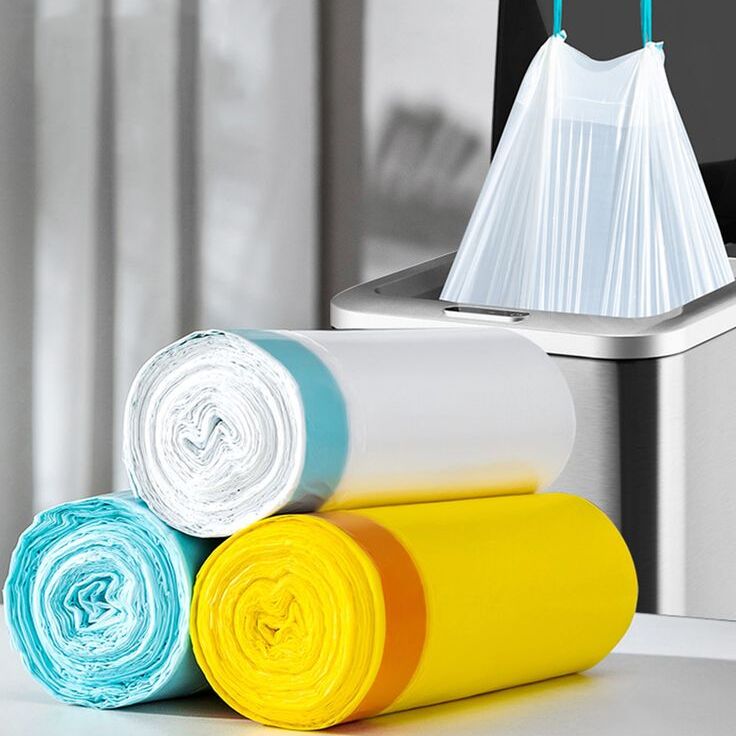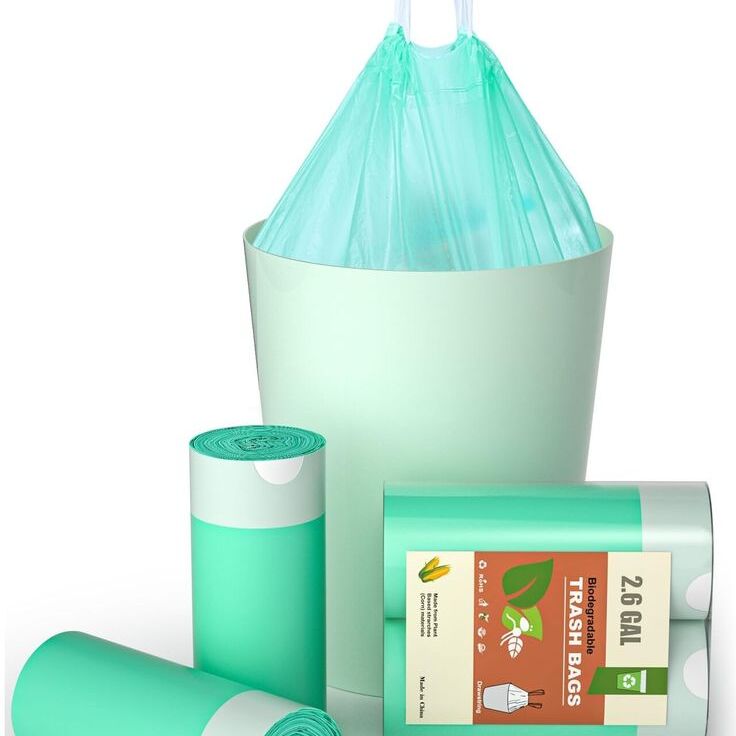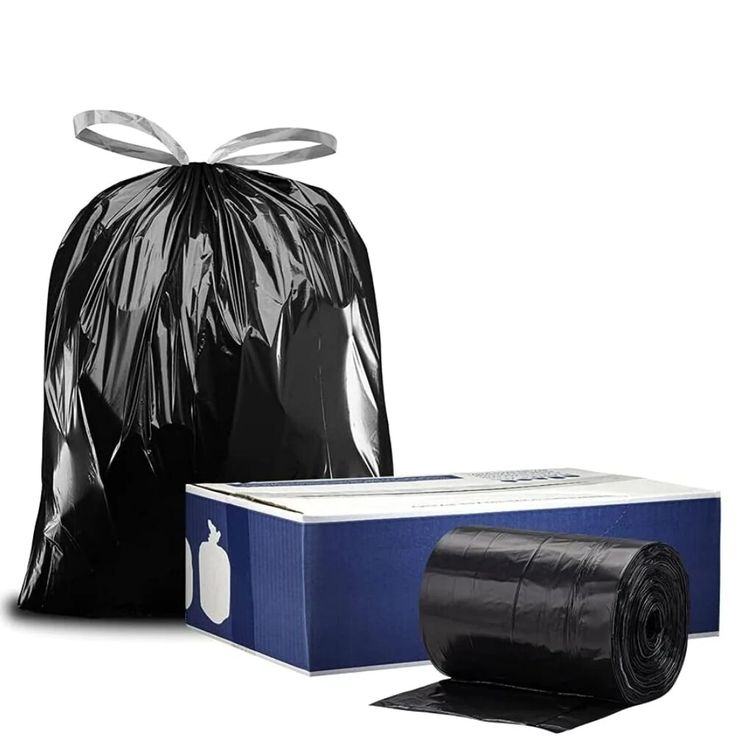Key Features to Look for in Kitchen Garbage Bags
Choosing the best kitchen garbage bags involves understanding key features that enhance their overall performance. With the right bags, you can make waste disposal more efficient and keep your kitchen clean. Here are essential aspects to consider.
Strength and Durability
One of the most critical features of a garbage bag is its strength and durability. Garbage bags need to be tough enough to hold heavy trash without tearing. Look for bags that come with reinforced seams and are made from stretchable materials. High-density bags are excellent for lightweight trash such as paper and food wrappers. In contrast, low-density bags are more suitable for heavier items like food scraps or sharp objects. Opting for durable bags will save you from the hassle of unexpected leaks and spills, which can create a mess in your kitchen.

Leak-Proof and Odor Containment
Another crucial feature to look for is leak-proofing. Leak-proof garbage bags offer essential protection for your floors by preventing liquids from escaping. This is especially important when disposing of wet waste, which is often a part of daily kitchen clean-up. Additionally, odor containment plays a significant role in maintaining a pleasant kitchen environment. Select scented bags or those specifically designed to lock in unpleasant smells. This will help keep your kitchen smelling fresh, even when it houses garbage.
Size and Fit Options
Size matters greatly when selecting garbage bags. Choosing the right dimensions is crucial for ensuring a snug fit in your trash can. Oversized bags may slip out, leading to spills, while too-small bags might tear under pressure. To find the best fit, check the gallon capacity of your bin and match it with the appropriate sized bag. If you are unsure about which size to choose, stretchable bag options can be an excellent solution, as they can adapt to different volumes of waste while maintaining a secure fit.
By focusing on these key features—strength, leak-proofing, odor control, and size—you’ll be better equipped to select garbage bags that meet your needs and enhance your kitchen’s functionality.
Top Materials Used in Kitchen Garbage Bags
Choosing the best kitchen garbage bags starts with understanding the materials used. Different materials offer unique benefits for strength, durability, and environmental impact. Let’s explore the most common options available today.
Plastic Types: High-Density vs Low-Density
Plastic is the most common material used in garbage bags. The two main types are high-density and low-density plastic:
- High-Density Plastic: These bags are thin, lightweight, and less prone to punctures. They are ideal for lightweight trash, such as paper or food wrappers. High-density bags are cost-effective but not as stretchable as low-density options.
- Low-Density Plastic: These bags are thicker, stretchable, and resistant to tears. They work well for heavy or sharp waste items. Low-density bags are perfect for kitchens with higher trash volumes or bulkier refuse.
Choosing between these depends on your disposal needs. For kitchens generating heavy or mixed waste, low-density is a better option.
Eco-Friendly and Biodegradable Choices
If you want a sustainable and green kitchen, opt for eco-friendly materials:
- Biodegradable Garbage Bags: Made from plant-based materials like cornstarch, they break down naturally over time. These are ideal for composting and food waste disposal, as they minimize environmental harm.
- Recycled Plastic Bags: These use reclaimed plastic to reduce new waste. They are a budget-friendly eco-alternative but may not be as strong as standard plastic.
Both options help reduce reliance on traditional plastics and promote sustainable kitchen practices. Always check for certifications when buying eco-friendly garbage bags to ensure quality and true biodegradability.
Understanding these materials can help you find garbage bags that match your kitchen’s needs while supporting your values.
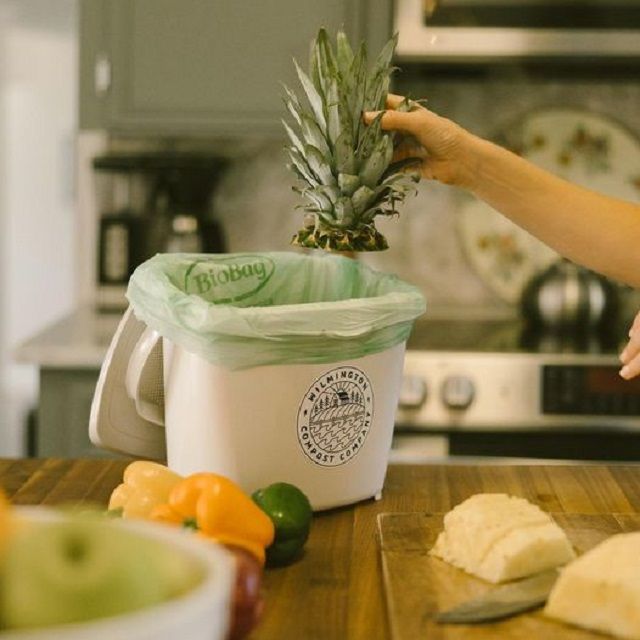
Popular Brands for Kitchen Garbage Bags
Finding the best kitchen garbage bags often involves choosing the right brand. Some brands are known for exceptional performance, reliability, and affordability. Here’s an overview of popular options.
Best-Selling Brands and Their Features
Certain brands have earned trust because of their quality and innovative features:
- Glad: Offers durable, leak-proof bags with strong odor-control technology. Their ForceFlex line provides stretchable strength for heavy loads.
- Hefty: Known for puncture-resistant designs and multi-purpose bags. Their Ultra Strong series combines strength with scented freshness.
- Simplehuman: Premium brand with tailored fits for specific trash cans. Their custom liners ensure a seamless, snug fit.
- Great Value: Walmart’s in-house brand provides budget-friendly options that don’t compromise on durability or performance.
These brands often stand out for combining strength, leak protection, and odor control. Consider your kitchen’s needs to select the most suitable product.
Budget-Friendly Options
If affordability is a priority, several brands provide quality without breaking the bank:
- Up & Up: Target’s brand offers cost-effective garbage bags with reasonable durability and performance.
- Kirkland Signature: Found at Costco, these bulk-pack bags are strong and economical for large households.
- Amazon Basics: Provides affordable alternatives with decent strength and reliability for daily use.
Budget-friendly brands may not include advanced features, but they deliver good value for routine tasks. Always match the bag’s capacity and features with your trash needs to avoid overspending or underperforming options.
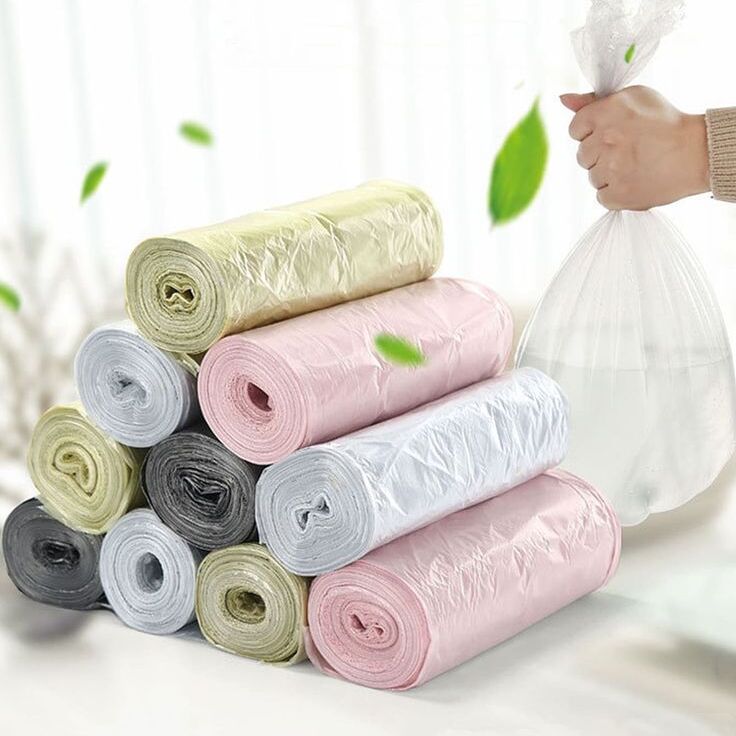
Specialized Garbage Bags for Specific Needs
Not all kitchen garbage bags serve the same purpose. Some are designed to meet specific needs. Choosing the right specialized bag can greatly enhance your kitchen’s cleanliness and convenience.
Scented Garbage Bags for Odor Control
Scented garbage bags help fight bad smells from food waste and wet trash. They are infused with fragrances like lavender, citrus, or vanilla to mask odors. These bags are perfect for households dealing with smelly kitchen waste. Some scented garbage bags also feature odor-neutralizing technology for better results. Brands like Glad and Hefty offer options with both odor control and durability.
Heavy-Duty Bags for Large Loads
Heavy-duty garbage bags are essential for managing bulky or sharp trash. These bags are made from thicker materials, often low-density plastic, to resist tears and punctures. They can handle tougher tasks like disposing of broken glass or heavy leftovers. Heavy-duty bags are ideal for kitchens with high trash output or during parties and events. Look for reinforced seams for added strength.
Compostable Bags for Green Kitchens
For eco-conscious households, compostable bags are a great choice. These bags are made from plant-based materials like cornstarch and break down naturally. They work well for disposing of organic waste, including food scraps and compostable packaging. Compostable garbage bags are an environmentally friendly way to reduce plastic usage. Ensure the bags are certified by organizations like BPI to guarantee true compostability.
By selecting scented, heavy-duty, or compostable garbage bags, you can address your kitchen’s unique needs effectively.
Tips for Selecting the Right Garbage Bag for Your Kitchen
Choosing the perfect garbage bag is essential for ensuring a cleaner and more efficient kitchen. With the right bag, you can manage waste more effectively and avoid unnecessary messes. Here are some helpful tips to guide you in making the best choice.
Matching Bag Sizes with Trash Can Dimensions
One of the most important aspects of selecting a garbage bag is ensuring a proper fit with your trash can. A bag that fits well minimizes the risk of leaks and spills. First, check your trash can’s gallon capacity and choose bags that match. Oversized bags can easily slip and lead to messy situations, while undersized bags may tear under pressure because they are overfilled.
Stretchable bags are a versatile option to consider. They can adapt to varying amounts of waste and ensure a snug fit in your can. To simplify your shopping experience, always measure your trash can’s dimensions before purchasing bags. This little step can save you time and frustration later.
Balancing Quality and Price
When selecting garbage bags, it’s essential to balance quality with price. While higher-quality bags often come with a higher cost, there are affordable options available that don’t compromise durability. For light kitchen waste, high-density bags can be a cost-effective choice. They work adequately for general refuse and are often less expensive.
However, for heavier or sharp items, investing in low-density bags is advisable. These bags typically offer better strength and durability, reducing the chances of tearing. Additionally, consider specialty options like scented or eco-friendly bags. While they may be more expensive, they provide added benefits, such as odor control or sustainability.
Don’t forget to compare brands and features to find bags that fit your budget. Make sure to avoid overpaying for features that you don’t need. Finding the right balance will ensure that you select garbage bags that perform well without breaking the bank.

Proper Disposal and Recycling of Garbage Bags
Proper disposal and recycling of garbage bags are essential for maintaining environmental health and reducing waste. Learning the right methods ensures both safe handling and eco-friendly practices.
Safe Methods to Dispose of Non-Biodegradable Bags
Non-biodegradable garbage bags require special attention since they don’t decompose naturally. Here are tips to dispose of them safely:
- Seal the Bag Properly: Tie up the bag securely to prevent leaks and spills during transportation.
- Dispose in Designated Bins: Use only public waste bins or landfills designed for non-biodegradable waste.
- Avoid Burning Plastic Bags: Burning creates harmful toxins that pollute the air and affect health. Always use approved disposal methods.
- Participate in Waste Collection Drives: Join local clean-up programs to ensure proper handling of non-biodegradable waste.
Disposing of these bags responsibly reduces harm to the environment and minimizes pollution risks.
Recycling Guidelines for Plastic and Biodegradable Bags
Recycling garbage bags—whether plastic or biodegradable—ensures they’re reused efficiently. Follow these guidelines to recycle correctly:
- Check Plastic Type: Identify the recycling code on the bag (e.g., #2 or #4) for correct processing.
- Clean Before Recycling: Wash out any food residues or liquids to prevent contamination.
- Locate Recycling Centers: Use facilities accepting plastic bags, often found in supermarkets or specific recycling plants.
- Compost Biodegradable Bags: For compostable bags, include them in home composting systems or send them to industrial compost facilities.
- Avoid Mixing Materials: Don’t mix plastic bags with other recyclables like glass or paper for better sorting.
Recycling keeps materials out of landfills and supports a sustainable waste management system.
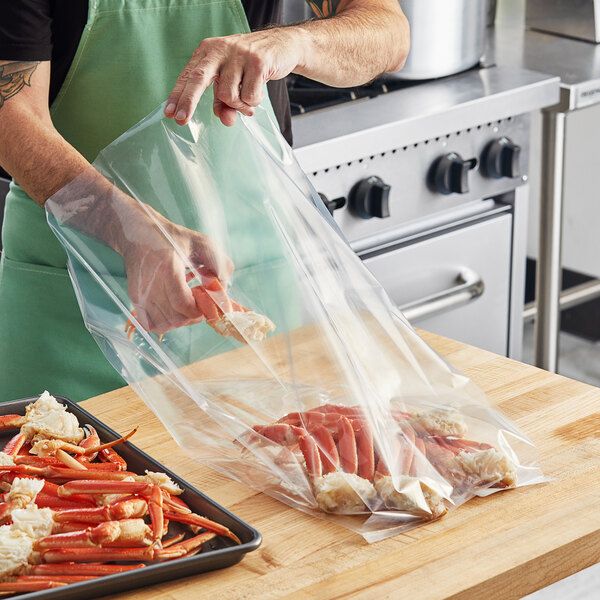
Maintaining a Clean and Organized Kitchen with Garbage Bags
A clean kitchen is essential for promoting health and efficiency in your home. To achieve this, the proper use of garbage bags is vital. By selecting the right bags and implementing effective practices, you can keep your kitchen tidy and functional.
Preventing Spills and Leaks
Preventing spills and leaks is crucial for maintaining a sanitary and pleasant kitchen environment. Here are some useful tips to consider:
- Choose Leak-Proof Bags: Opt for durable, leak-proof garbage bags. These are designed to withstand the weight of your waste and prevent trash juices from spilling onto your kitchen surfaces. A sturdy bag is your first line of defense.
- Double Bag for Security: When dealing with wet waste, consider double bagging. This simple technique adds an extra layer of protection against leaks, giving you peace of mind that your kitchen will remain clean.
- Avoid Overloading Bags: It can be tempting to fit as much waste as possible into a garbage bag, but overloading increases the risk of tears and spills. Always be mindful of the bag’s capacity to ensure it remains intact.
- Use Properly Fitting Bags: Choosing garbage bags that fit snugly in your trash can is essential. A well-fitting bag reduces the chances of slipping and unwanted messes around your kitchen.
- Inspect for Damage: Before using each bag, take a moment to check for holes or weak spots. A small tear can lead to a big mess, so it’s worth ensuring your bags are in good condition.
With the right techniques, you can minimize spills and maintain cleanliness effortlessly, allowing you to focus on preparing delicious meals.
Regular Replacement Practices
Regularly replacing best kitchen garbage bags is key to ensuring a neat and odor-free kitchen. Follow these steps for best results:
- Replace Daily or When Full: Garbage bags should be replaced daily or when they reach three-quarters full. Never allow them to overflow; this only invites mess and odor.
- Clean Trash Bins Regularly: Take the time to wipe or sanitize your trash cans after replacing bags. This routine prevents lingering odors and bacteria build-up, contributing to a fresher kitchen atmosphere.
- Avoid Accumulating Odorous Waste: Promptly dispose of food scraps and wet waste. This minimizes unpleasant smells and keeps your kitchen more enjoyable.
- Stock Up on Bags: Always keep extra garbage bags handy to avoid unexpected shortages. A well-stocked supply ensures you can maintain cleanliness without interruption.
By establishing consistent routines, you can keep your kitchen fresh and organized. Investing in quality best kitchen garbage bags and adhering to effective practices will simplify your kitchen maintenance and enhance your cooking experience.
